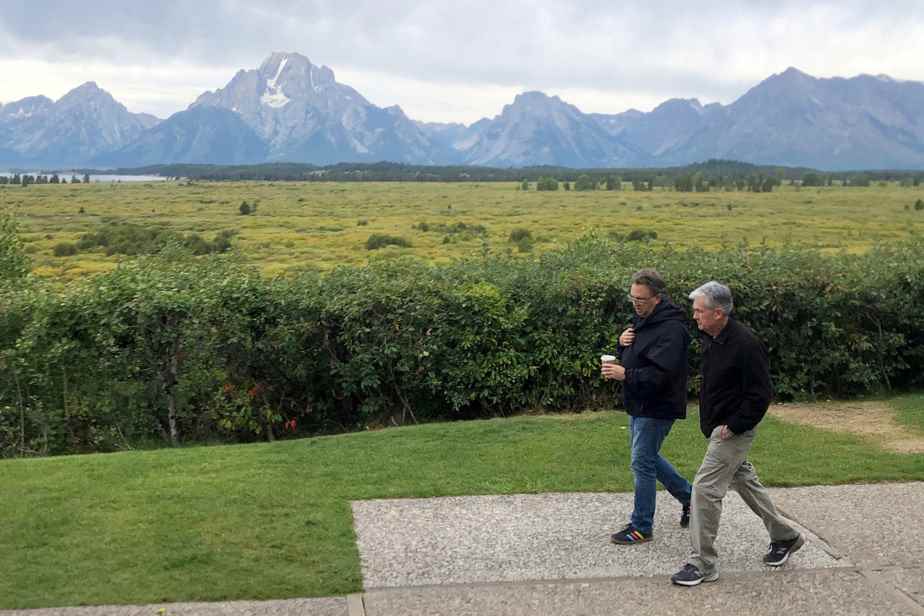(Washington) Raise rates against inflation, but not too much to avoid bringing the economy to its knees: this dilemma, which central bankers face, should be at the heart of their annual high mass, from Thursday to Saturday in the American West, in Jackson Hole.
Posted at 11:10 p.m.
The majestic mountains of Grand Teton, Wyoming, host this meeting every year, under the leadership of the American Central Bank (Fed), since the era of its former president Paul Volcker.
The most anticipated moment of this “symposium” will be the speech of Fed Chairman Jerome Powell on Friday.
The President of the European Central Bank (ECB), Christine Lagarde, will not make the trip to the United States. But Isabel Schnabel, a German member of the ECB’s executive board, will take part in a panel on Saturday. Andrew Bailey, Governor of the Bank of England (BoE), confirmed that he would be present in Jackson Hole, but only to observe the discussions, without participating in them.
“The cards are on the table at the economic level: a common enemy which is inflation, a risk of slowing down the economy too much. You have to choose between the two,” Gregori Volokhine, portfolio manager for Meeschaert Financial Services, told AFP.
However, “the Fed cannot say that it must choose […] to increase unemployment in order to bring down inflation, but that is the choice available to it”, he underlines.
” Transition ”
This meeting takes place at a time when central banks around the world are tightening their monetary policies to fight inflation. At the risk, however, of hampering the recovery.
The mighty US Federal Reserve has already hiked rates four times since March. First of the usual quarter of a percentage point, before accelerating the pace.
And inflation began a welcome slowdown in July, to 8.5% over one year, after beating in June a price increase record for more than 40 years, to +9.1%.
All eyes are now on the next monetary meeting, September 20-21, for which another sharp rise is on the table, half a point or even three-quarters of a percentage point.
“It is unlikely that the Jackson Hole conference […] brings real news about the Fed’s plans for future rate hikes,” according to Carola Binder, who teaches economics at Haverford College in Pennsylvania.
Rates are between 2.25 and 2.50%, bordering on the so-called “neutral” level, which neither stimulates nor slows down the economy, evaluated between 2.00% and 3.00%.
Jerome Powell, in his speech, “will want to emphasize the likely transition that will occur with monetary policy in the future. One thing they absolutely want to communicate is that they remain very focused on price stability issues,” notes Jonathan Millar, economist for Barclays.
Credibility
“Jackson Hole could be very important to enlighten us” on the assumption of maintaining high rates, despite an economic slowdown, also anticipates Mazen Issa, specialist in the foreign exchange market for TD Securities.
US GDP has already contracted in the first two quarters, which corresponds to the classic definition of a recession.
But according to economists, this is not the case today in the United States, due in particular to the solidity of the job market, which in July returned to its pre-pandemic level, with a rate unemployment at 3.5% and all the jobs destroyed are now recreated.
A year ago, during this “symposium”, Jerome Powell mentioned “transitory factors” and warned against the risks of a premature tightening. But inflation has since turned out to be tougher than expected, beating central bankers’ forecasts.
